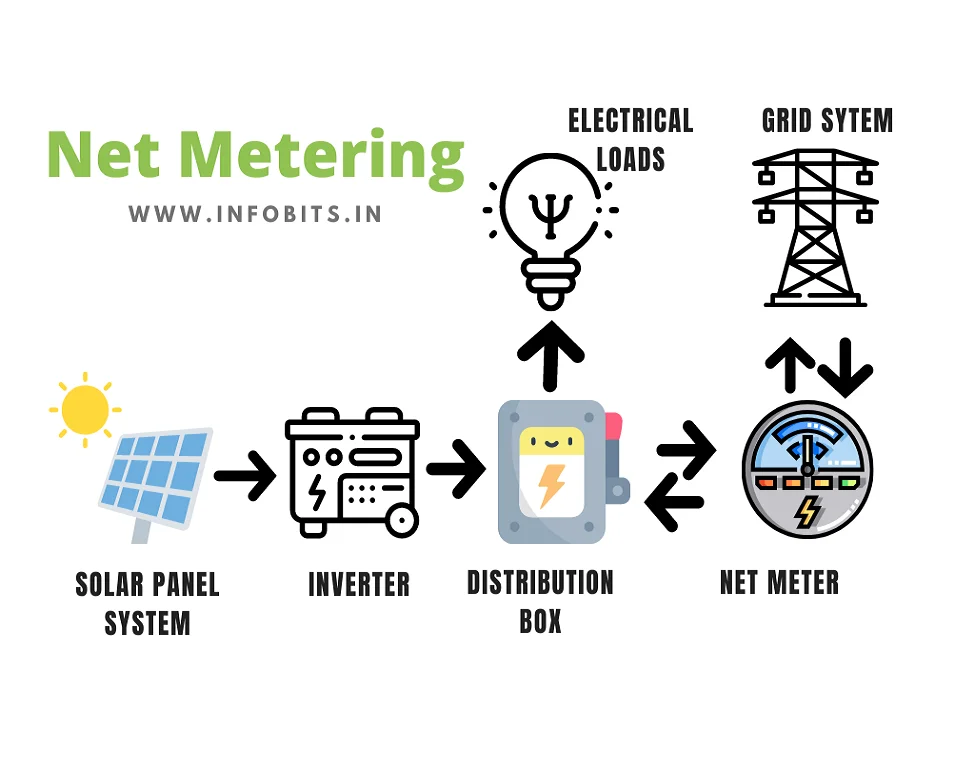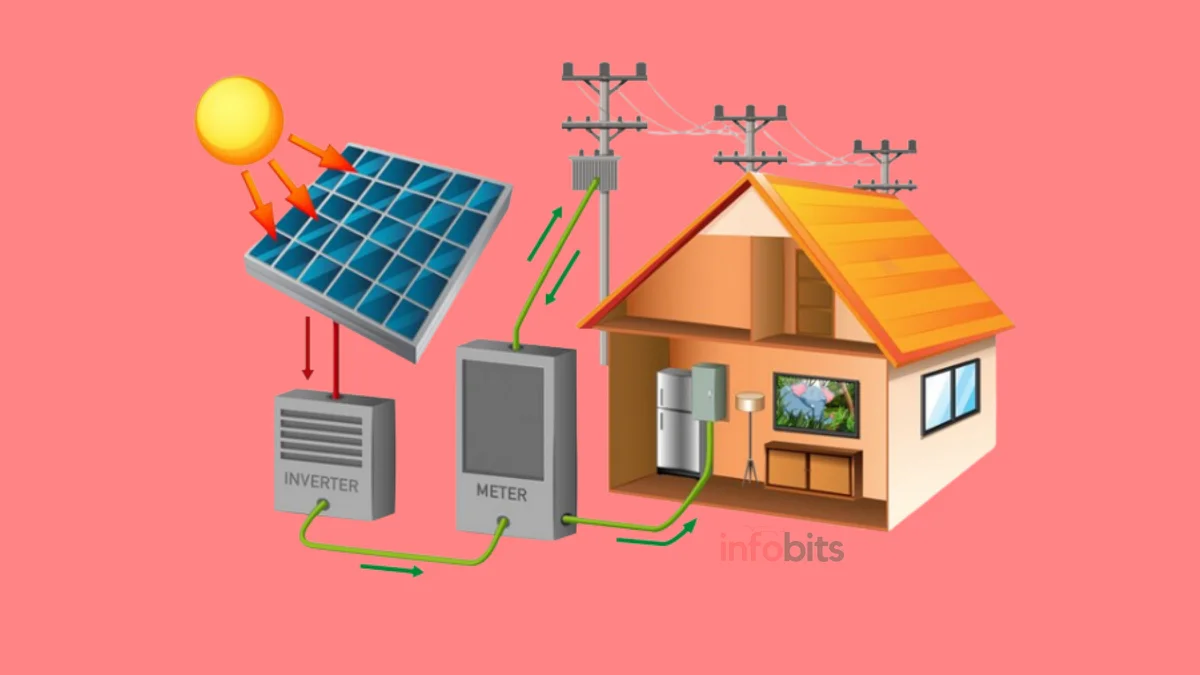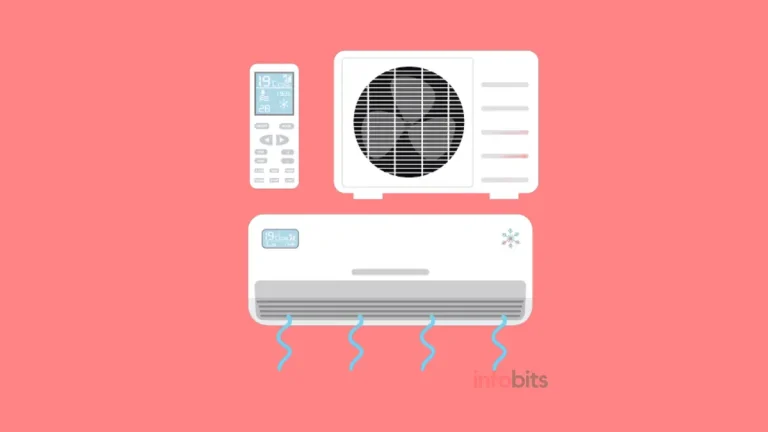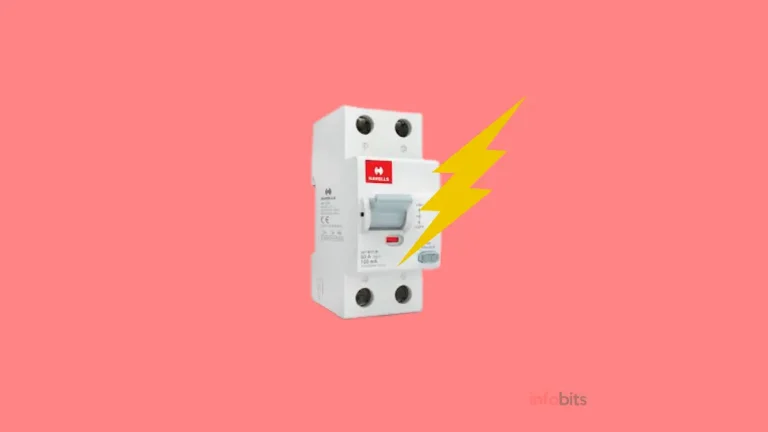What Is Net Metering in a Solar Power System and How Does It Work?
Imagine generating your electricity using solar panels and being able to sell extra power back to the grid.
This is made possible by a mechanism known as net metering, which allows solar power system owners to save money, lower their carbon footprint, and contribute to a more sustainable future.
In this post, we’ll look at the finer points of net metering, including how it works and its various advantages.
What is Net Metering?
Net metering is a way of calculating and billing electricity in an on-grid-connected solar power facility.
It is an energy-compounding system that computes the difference between the electrical energy used by the client from the grid and the energy supplied to the grid by his or her solar power system.
This scheme credits solar energy system owners for the electricity they contribute to the grid.
For example, if a residential client has a solar system installed on their roof, it might generate more power than their home consumes during daytime hours.
If the home is net-metered, the electricity meter will run backwards to offer a credit against the amount of power utilized at night or during other times when the home’s electricity usage exceeds the solar system’s production.
Net metering enables household and business consumers who generate their electricity from solar power to sell what they don’t use back into the grid.
A net meter is an energy-measuring device used in an on-grid solar power system. It is a bidirectional energy meter that monitors the flow of electricity to and from the main grid.
The net meter is an essential component of an on-grid solar power system and is often placed by the power utility authority.
The consumer will be unable to collect credit from the electric utility provider until we use this net meter in the solar power system.
How Does Net Metering Function in a Solar Energy System?
If our solar power plant generates more electricity than we use, we will be able to export it to the main grid. We may claim credit for the energy we supply to the grid, which will be deducted from our monthly power bills.

Assume the client supplied 400 units (kWh) of electrical energy to the grid via his or her solar panel power system and consumed 100 units (kWh) from the grid.
The difference between the energy provided (400 units) and the energy consumed (100 units) from the grid is the ‘net energy,’ which is 300 units.
The consumer will then receive credit for the energy delivered and will not be required to pay for 100 units. Instead, the consumer will receive 300 units in credit.
It might be in the form of grid compensation or adjustments to the following monthly charge. You will not be paid in cash by the utility company for the energy you produce.
Related: How to Select the Right Inverter and Battery for Home in India?
Advantages of Net Metering
Electricity from local solar or wind farms is fed into the system and distributed to neighbouring customers. As a result, the distribution or transmission network’s load can be lowered.
The biggest advantage of using a net meter is that the customer’s monthly power bill will be substantially cheaper.
So that he or she can recover the expense of the solar power system in a short period. This period is determined by the amount of power produced.
In other words, we can save a lot of money throughout the solar energy system’s existence.
Around noon, a solar power station generates more electricity. However, our need for power at this time is far lower than it is in the mornings and evenings.
This net metering permits electricity withdrawn from the grid during peak hours to be balanced by providing extra electricity at noontime because solar power output is lower in the morning or evening.
Net metering is only possible and mandated in on-grid solar systems.
The biggest disadvantage of using a net meter system in conjunction with an on-grid power system is that we will be unable to use solar power if there is no energy from the grid.
How Will You Obtain Net Metering for a Solar Power System?
To install an on-grid electricity system in your home or workplace, you must first seek approval from the local utility authority in your location. The application must be submitted in the format specified. The procedure may differ slightly from one state to the next.
After being examined, you will be granted authorization to install the system following their requirements and standards. After a thorough examination, the system will be powered on soon after installation.
The client and the utility company have an agreement that specifies the cost of the energy we deliver and consume, as well as the process by which they evaluate credits for the energy they get from the customer.
Conclusion
Net metering enables solar power system owners to save money, lower their carbon impact, and become more self-sufficient in terms of energy generation.
Individuals and communities may help to create a more sustainable energy future by learning how net metering works and taking advantage of its benefits.
So, if you’re thinking about installing solar panels, look into the net metering alternatives in your area. You can take advantage of the power of the sun while also helping the environment.
We hope you find this information useful, and please share it with your friends and relatives.
Subscribe to our free newsletter so that you will get similar articles and regular updates directly in your Email.
Also, consider following our Facebook and Twitter pages for regular updates.







